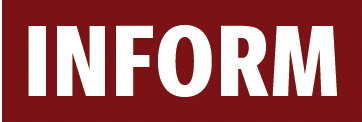Meeting Purpose: 
Click below for practical tips and tools.
Pinpoint one or two recommendations you can put to work – actions that you know will save time over your current approach to meetings.
Is a meeting even needed? If the information can be shared by email, Teams, or another way, choose the faster method, especially if only a few people are involved.
Is the information likely to prompt questions and require discussion? If yes, send it ahead and then have a focused meeting to provide answers and fuller explanation.
Is this a standing meeting? If this is a meeting you routinely have with the same people, consider having fewer meetings with tighter agendas – because the hours spent in recurring meetings really add up over time. (Do you have an agenda for these meetings? If not, it's possible that this time together has become less relevant, less focused, and less productive.)
Ask participants to provide key progress updates to send out in advance of the meeting. Then everyone can come prepared with meaningful questions and ideas.
Prioritize essential information. Avoid overloading participants with unnecessary details. Also avoid jargon or complex terms, especially if some of the meeting-goers aren't aware of all the terminology.
Build in time for questions. If you're having a meeting to share information, the info is likely involved, so you want to get questions.
Create a parking lot for new items that surface and require the input of other players. This avoids someone in the room guessing rather than fact finding.
If most or all of the meeting participants are sharing information, use a person-to-person approach (round robin) to ensure that everyone is heard. Wisely manage the meeting time by having each person limit their segment to a set number of minutes.
Be mindful of the room layout. If the meeting is in person, use a U-shaped set-up (at a conference table or with arranged tables) so that everyone can see the speaker(s).
Get people to open up by writing things down. If the information being shared is complicated or sensitive or both, and people will likely be hesitant to speak up, be ready with an index card or some sticky notes. Have people write down their questions (without names), collect these, then go through them and answer.
You can do something similar for online meetings. Although it's not anonymous, encourage people to use chat to write their questions. Some people will be more inclined to ask if they can just type it out.
Offer supplementary materials, handouts, or resources post-meeting for those who want or need to dive deeper into the topic.
The following agendas are general examples designed to serve as a starting point. Note that there are two agendas.
The percentages are approximate time allotments, to be adjusted based on specific needs or priorities for the meeting.
Sample Agenda 1
• 1 or 2 people providing information
1. Welcome (5%)
- Note the purpose of the meeting.
2. Information-Sharing (60%)
- Share key info and updates.
3. Questions (20%)
- Participants ask clarifying questions.
4. Closing (15%)
- Discuss immediate actions or follow-up needed.
- Summarize main points and thank everyone.
Sample Agenda 2
• Multiple people providing information
1. Opening Remarks (5%)
- Note the purpose of the meeting.
2. Participant Information-Sharing (80%)
- Give each person a specific amount of time to share their information.
- Allow other participants to ask brief clarifying questions after each update, if needed.
4. General Discussion (10%)
- Open the floor for any overarching comments, observations, or suggestions related to the information-sharing.
Wrap-Up and Next Steps (5%)
- Summarize the main points discussed.
- Highlight any immediate follow-up actions or decisions.